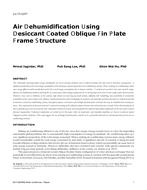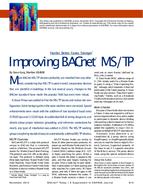An off-the-shelf two-ton window air conditioner having an energy efficiency ratio of 10 was used to perform a drop-in test with R-407C. Laboratory tests were performed using a parallel-cross-flow (PCF) evaporator and a counter-cross-flow (CCF) evaporator. The CCF configuration is designed to take advantage of the temperature glide of R-407C so that the warm evaporator inlet air will be in contact with the higher temperature part of the evaporator coils first.
Test results indicated that, at the ARI-rated indoor and outdoor conditions, the cooling capacity was 8% higher and system coefficient of performance about 3.8% higher for the CCF evaporator than for the PCF evaporator. The test results also showed that the latent load for CCF was 30.6% higher than for PCF. The far better dehumidification effect provided by the CCF evaporator design is desirable for areas where the latent load is high. The experimental findings should be useful for future efforts to design a dehumidifier that uses a zeotropic refrigerant that provides a significant temperature glide. R-22 test data from a previous project are included as a reference.
Units: I-P
Citation: Symposium, ASHRAE Transactions, 1998, Vol. 104, Part 2, Toronto, ON
Product Details
- Published:
- 1998
- Number of Pages:
- 5
- File Size:
- 1 file , 99 KB
- Product Code(s):
- D-7724


